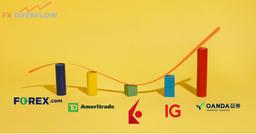forex trading vs crypto trading
Cryptocurrency trading involves buying and selling digital currencies like Bitcoin, Ethereum and Litecoin on a decentralized digital exchange. On the other hand, forex trading is the buying and selling of different currencies on the foreign exchange market.
What Is Forex Trading?
Forex trading, also known as foreign exchange trading or FX trading, involves the buying and selling of currencies on the foreign exchange market with the aim of making a profit. Foreign exchange, or forex, traders speculate on changing exchange rates by converting large sums of money from currency to currency, much like stock traders buy and sell different stocks. Forex traders essentially attempt to buy low and sell high for a profit, but the asset they are trading is currency. The forex market is the largest and most liquid financial market in the world, with a daily trading volume exceeding $6 trillion as of the last available data.
Here are the key details of forex trading:
1. Currency Pairs:
In forex trading, currencies are quoted in pairs, where one currency is exchanged for another. The first currency in the pair is called the "base currency," and the second one is the "quote currency."
2. Major, Minor, and Exotic Pairs:
Major pairs involve major world currencies like the US Dollar (USD), Euro (EUR), Japanese Yen (JPY), and British Pound (GBP).
Minor pairs don't include the US Dollar but consist of other major currencies.
Exotic pairs involve one major currency and one from a smaller or emerging-market economy.
3. Bid and Ask Price:
The bid price is the price at which traders can sell a currency pair.
The ask price is the price at which traders can buy a currency pair.
4. Spread:
The spread is the difference between the bid and ask prices. Brokers profit from the spread.
5. Leverage:
Forex trading often involves the use of leverage, allowing traders to control a larger position size with a smaller amount of capital. While leverage can amplify profits, it also increases the risk of significant losses.
6. Market Participants:
Participants include banks, financial institutions, central banks, corporations, governments, and retail traders.
7. Market Structure:
The forex market is decentralized, meaning it doesn't have a physical location. Instead, it operates electronically over-the-counter (OTC), with trading occurring 24 hours a day, five days a week.
8. Forex Brokers:
Retail traders access the forex market through brokers, which provide trading platforms and facilitate transactions. It's essential to choose a reputable and regulated broker.
9. Fundamental and Technical Analysis:
Traders analyze the forex market using fundamental factors such as economic indicators, interest rates, and geopolitical events.
Technical analysis involves studying historical price charts and patterns to make trading decisions.
10. Economic Indicators:
Forex traders closely monitor economic indicators like GDP growth, employment data, inflation rates, and central bank decisions to gauge the health of a country's economy and its currency.
11. Risk Management:
Successful forex trading involves effective risk management strategies, including setting stop-loss orders and managing position sizes.
12. Currency Interventions:
Central banks may intervene in the forex market to stabilize or influence their currency's value.

What Is Crypto Trading?
Cryptocurrency trading is the act of speculating on cryptocurrency price movements via a CFD trading account, or buying and selling the underlying coins via an exchange. Cryptocurrency trading involves the buying and selling of digital currencies with the goal of making a profit. Unlike traditional currencies issued by governments (fiat currencies), cryptocurrencies operate on decentralized blockchain technology. Here are the key details of cryptocurrency trading:
1. Cryptocurrencies:
Cryptocurrencies are digital or virtual currencies that use cryptography for security and operate on decentralized networks based on blockchain technology.
Bitcoin (BTC) was the first cryptocurrency, and thousands of others (altcoins) have since been created, including Ethereum (ETH), Ripple (XRP), Litecoin (LTC), and many more.
2. Exchanges:
Cryptocurrency trading occurs on online platforms called exchanges.
Popular exchanges include Coinbase, Binance, Kraken, and Bitstamp.
Exchanges provide a marketplace for buyers and sellers to trade various cryptocurrencies.
3. Trading Pairs:
Cryptocurrencies are traded in pairs similar to traditional forex. For example, BTC/USD represents the exchange rate between Bitcoin and the US Dollar.
4. Wallets:
Cryptocurrency wallets are digital tools used to store and manage digital assets. Wallets can be online (hot wallets), offline (cold wallets/hardware wallets), or software-based.
5. Volatility:
Cryptocurrencies are known for their price volatility, with significant price fluctuations occurring in short periods. This volatility provides opportunities for traders but also increases risk.
6. Fundamental and Technical Analysis:
Traders analyze cryptocurrencies using fundamental factors such as technology upgrades, partnerships, regulatory developments, and community sentiment.
Technical analysis involves studying price charts, patterns, and trading volumes to make informed decisions.
7. ICOs and Token Sales:
Initial Coin Offerings (ICOs) and token sales are fundraising mechanisms where new cryptocurrencies are sold to investors before being listed on exchanges.
8. Decentralization:
Unlike traditional financial markets, the cryptocurrency market is decentralized, meaning it operates without a central authority or government control.
9. Decentralized Finance (DeFi):
DeFi refers to decentralized financial services and applications built on blockchain technology, providing alternatives to traditional financial services like lending, borrowing, and trading.
10. Security Concerns:
Cryptocurrency exchanges and wallets can be susceptible to hacking, fraud, and other security issues. Users must take precautions to secure their holdings.
11. Regulatory Environment:
Cryptocurrency regulations vary globally, with some countries embracing them, others imposing restrictions, and a few banning them altogether.
12. Leverage and Derivatives:
Some cryptocurrency exchanges offer margin trading, allowing traders to borrow funds to amplify their trading positions. Derivatives such as futures and options are also available.
13. Market Sentiment:
Cryptocurrency prices are influenced by market sentiment, news, and social media. Positive or negative developments can have a significant impact on prices.
14. Initial Exchange Offerings (IEOs):
Similar to ICOs, IEOs are token sales conducted on cryptocurrency exchanges, providing a more secure and streamlined fundraising process.
Forex Trading Vs Crypto Trading
Forex (foreign exchange) trading and cryptocurrency trading are both financial markets that involve the buying and selling of assets, but they have distinct differences. Let's delve into the details of each:
1. Nature of Market:
Forex Trading:
Involves the trading of fiat currencies (e.g., USD, EUR, JPY).
Operates in the decentralized global foreign exchange market.
Mainly influenced by economic indicators, interest rates, and geopolitical events.
Crypto Trading:
Involves the trading of digital or cryptocurrencies (e.g., Bitcoin, Ethereum).
Operates in decentralized blockchain networks.
Influenced by factors like technology advancements, regulatory developments, and market sentiment.
2. Market Hours:
Forex Trading:
Operates 24 hours a day, five days a week, as it involves major financial centers worldwide.
Sessions include Asia, Europe, and North America.
Crypto Trading:
Operates 24/7 since there is no central authority; it's not bound by traditional market hours.
3. Liquidity:
Forex Trading:
Generally, the forex market is highly liquid due to the vast number of participants.
Crypto Trading:
Liquidity can vary significantly between different cryptocurrencies; major ones like Bitcoin tend to be more liquid.
4. Market Maturity:
Forex Trading:
A well-established market with decades of history and a wide range of participants, including central banks, financial institutions, and retail traders.
Crypto Trading:
A relatively newer market, with a shorter history and a diverse participant base that includes retail investors, institutions, and technology enthusiasts.
5. Volatility:
Forex Trading:
Volatility varies across currency pairs, but it is generally lower compared to cryptocurrencies.
Crypto Trading:
Known for high volatility, with price fluctuations often exceeding those in traditional financial markets.
6. Regulation:
Forex Trading:
Heavily regulated by financial authorities in various countries.
Crypto Trading:
Regulations vary globally; some regions have embraced cryptocurrencies, while others have imposed restrictions.
7. Leverage:
Forex Trading:
Leverage is commonly used, allowing traders to control larger positions with a smaller amount of capital.
Crypto Trading:
Leverage is available, but it can be riskier due to the already high volatility of cryptocurrencies.
8. Accessibility:
Forex Trading:
Widely accessible to retail traders through online platforms provided by brokers.
Crypto Trading:
Initially more accessible to tech-savvy individuals; however, user-friendly platforms and exchanges have increased accessibility.
9. Fundamental Analysis:
Forex Trading:
Relies on economic indicators, central bank policies, and geopolitical events for analysis.
Crypto Trading:
Fundamental analysis includes technology upgrades, partnerships, regulatory developments, and community sentiment.
10. Security Concerns:
Forex Trading:
Traditional security concerns involve broker integrity, but the market itself is not prone to hacking.
Crypto Trading:
Involves the risk of exchange hacks, wallet vulnerabilities, and other security-related issues.
In summary, while both forex and crypto trading involve speculative activities, they differ in terms of market structure, trading hours, volatility, and the factors influencing price movements. Traders should carefully consider these distinctions and choose the market that aligns with their risk tolerance, preferences, and trading strategies.


